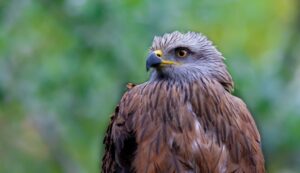
- Profile
- Tour Operators
- Accommodation
- prev
- next
Overview
Taking its name from the Djurdjuran massif that lies within its boundaries, the Djurdjura National Park in the North West Region of Algeria consists of three main sections – eastern, western and central - extending into the districts of Bouira to the south, and Tizi-Ouizou to the north. With its many dense forests, deep gorges and unusual grottoes, the park is widely considered to have some of the most beautiful scenery in Algeria. It is also home to varied flora and fauna, including the endangered Barbary Macaque.
The outstanding physical features of the Djurdjura National Park include the mountain peaks of the Djurdjuran massif of the Grande Kabylie, part of the Tell Atlas Mountains of Algeria. At a height of 2,308 meters, Lalla Khedidja is the highest part of the Djurdjuran massif, and one of Algeria’s highest mountains. The north escarpment face of the massif contains deep valleys, potholes, fissures and gorges, with ancient glacial action having left its mark on a number of the cliff faces. The park is well watered by springs and streams and has a number of glacial lakes within its boundaries. On the south-eastern slopes of the Djurdjuran massif there are dense Atlas cedar forest groves, while at lower altitudes there are endemic pine and juniper trees.
The Djurdjura National Park is a refuge for a wide variety of fauna including hyena, wild boar, crested porcupine, hare, wild cat, jackal, mongoose, weasel, red fox and the Barbary Macaque, sometimes referred to as the Barbary Ape, although it is in fact not an ape, but a member of the Old World monkey species. Birding enthusiasts will appreciate the variety of birds in the park, which include a number of raptors such as the black vulture, booted eagle, long-legged buzzard, kestrel, golden eagle and peregrine falcon.
The main visitor center for the Djurdjura National Park is located at Tikjda, along with hotels and campsites. The park was created in September 1925 under the French colonial government of the time, and following the independence of Algeria it was re-established as a national park to protect this unique ecosystem for the people of Algeria, and for visitors to this fascinating country to enjoy.
Location
-
10, Bechloul, Bouïra, Algeria
Vital Park Information
Algeria
185 km²
Tap water is considered not drinkable although its quality is better than before. Once boiled, there is no problem in consuming it. Algeria enjoys a large variety of excellent mineral bottled water.
Dinar (DZD)
Low Risk - Not necessary to take anti-malaria drugs






